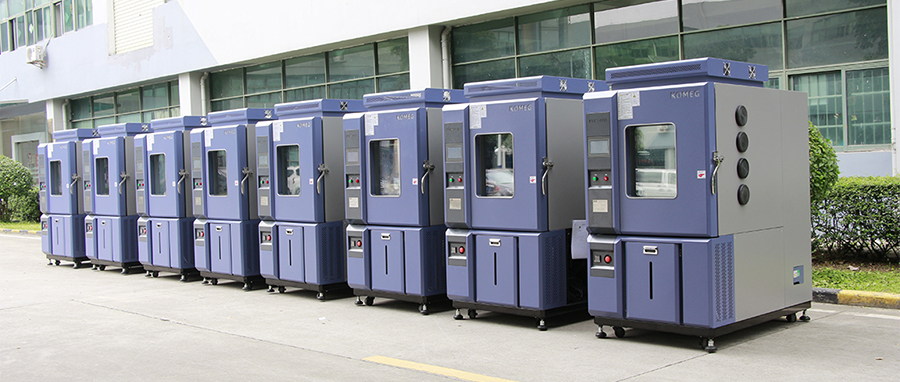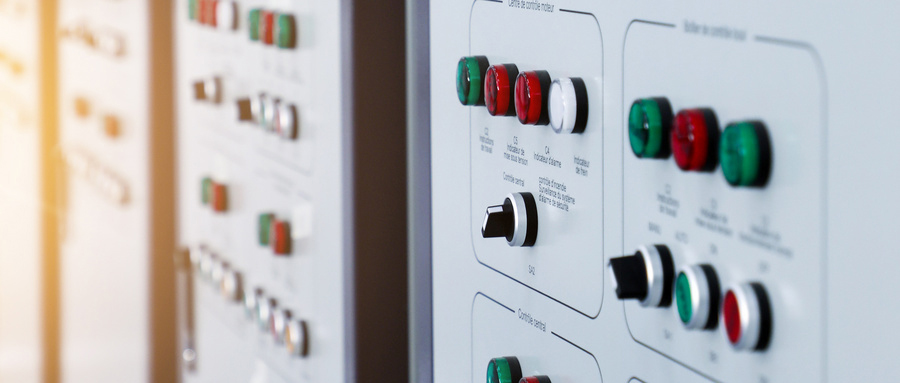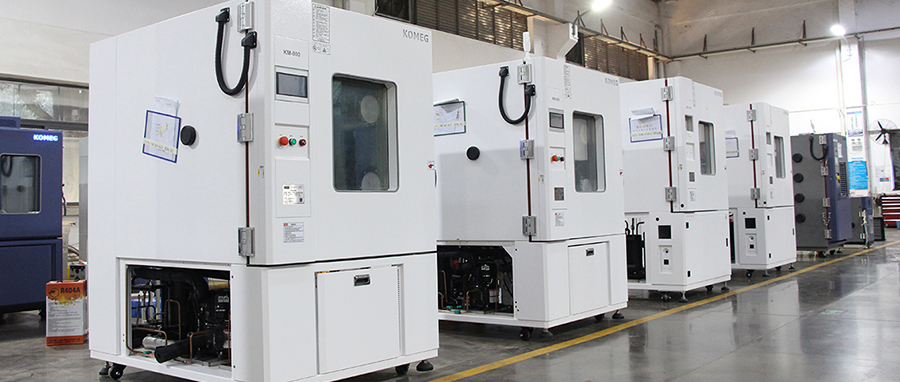The constant temperature and humidity chamber has an accurate temperature and humidity control system, which is mainly used for high temperature, low temperature and different humidity tests. It is applicable to the temperature and humidity change test detection of electronics and electricians, food, plastic rubber, automobile manufacturing, lamps, chemicals, building materials, textiles and clothing, etc.
By understanding the scientific maintenance of the constant temperature and humidity chamber in the daily use process, not only can the service life of the equipment be greatly extended, but also can effectively avoid technical failures caused by careless maintenance. Today, we will talk about the common problems and maintenance of the constant temperature and humidity dry and wet bulb test chamber.

First.Why does the humidity fail to meet the specified requirements during the first damp heat test?
The constant temperature and humidity test chamber is in the process of damp heat test
1. The measured humidity is higher than the set humidity
(1) Check whether the wet bulb gauze is properly covered on the humidity sensor.
(2) It may be caused by the drying of the gauze on the wet bulb sensor. It is necessary to check whether the water tank of the wet bulb sensor is short of water.
(3) It may be that the wet ball gauze has been used for a long time, or the water supply quality is pure. It can be eliminated by replacing or cleaning the gauze.
2. The measured humidity is smaller than the set humidity
(1) Check whether the humidification water circuit is normal (water level, water tank, wet ball gauze, etc.)
(2) If the humidification water circuit is normal, it may be caused by the failure of humidification components, and you need to contact the after-sales personnel of KOMEG for maintenance. Note that the set humidity should meet the controllable temperature range of the equipment.

Second. low temperature can not reach the target, how to solve the problem of slow cooling?
First, observe the temperature change. If the temperature drops slowly, check the following points:
1. Drying in the working room: the temperature will be low immediately after the test chamber (fast temperature change), and the evaporator may be frosted/iced, which will slow down the cooling rate.
If such phenomenon occurs, it is recommended to cool down after drying
2. The number and placement of test samples in the working chamber will also affect the cooling rate.
If such phenomenon occurs, it is recommended to reduce samples and place them correctly to ensure smooth circulation in the working chamber.
3. After the above reasons are eliminated, it may be the fault of the refrigeration system, and you need to contact the after-sales personnel of KOMEG for maintenance.
4. The temperature rises after reaching a certain value:
(1) Check whether the sample in the workroom is caused by heating.
(2) Check whether the output is affected by excessive energy consumption due to thermal balance.
(3) Temperature sampling unit (sensor) fault. Contact KOMEG professional after-sales personnel for maintenance.
Third. high temperature test, what should we do if the temperature change fails to reach the test temperature value?
The electrical system can be checked and the faults can be eliminated one by one:
1. If the heating rate is too slow, check whether the air circulation system works normally.
(1) The load material may absorb heat, which may cause the temperature rise to be too slow.
(2) The heating power is too small.
(3) Confirm whether the heater works normally, and contact the after-sales personnel of KOMEG for maintenance in case of line fault
2. If the temperature rises quickly, check whether the circulating fan operates normally. If the temperature overshoot is severe, the PID setting parameters need to be adjusted. If the temperature rises directly, it may be that the sensor or heating component/circuit is faulty, and you need to contact the after-sales service personnel of KOMEG for maintenance
Fourth equipment shows abnormal pressure, how to deal with it?
1. Air cooling type: high ambient temperature, poor heat dissipation. First, check whether the equipment is placed more than 60cm from the wall; Secondly, check whether the equipment site is a confined space, otherwise it will also cause temperature rise in the environment, which will lead to high pressure side of the compressor and alarm.
2. Water cooling type: the pressure, temperature and flow of cooling water cause overpressure alarm (the water cooling equipment is less affected by the ambient temperature), which requires professional personnel for maintenance.
The above are the possible causes of equipment overpressure alarm, please contact the after-sales service personnel of KOMEG for assistance.

Fifth. constant temperature and humidity test chamber The correct placement method of wet gauze
During the damp heat test, the wet bulb gauze plays an important role in the humidity perception of the constant temperature and humidity test chamber. Therefore, the correct placement and maintenance of wet gauze must follow certain specifications and steps:
1. Position: put the lower end of the wet ball gauze into the sink to soak (more easily sense the humidity), hang it in the air or put it on the humidity sensor.
2. Maintenance and inspection: the wet ball gauze must be hung on the wet ball sensor at the upper end, and put into the wet ball gauze tank at the lower end, so that it can easily absorb the water in the tank and soak. If the wet ball gauze should be covered on the corresponding sensor, otherwise the humidity cannot be sensed, resulting in the illusion that the humidity is 100%, the humidity cannot drop, or the humidity cannot be controlled at all.
If the gauze does not absorb water, yellowing, drying or poor absorption effect occurs, please replace the wet ball gauze in time.
What should I do if the sixth constant temperature and humidity test chamber is out of service for a long time?
Six.If the constant temperature and humidity test chamber needs to be stopped for a period of time due to special circumstances, some protective measures should be taken, as follows:
1. When the constant temperature and humidity test chamber is out of service, take out the articles in the chamber, unplug the power plug, and clean the inside and outside of the chamber.
2. When the equipment is not in use, the moisture removal treatment shall be carried out. The specific method is as follows: drain the water in the chamber, set the temperature at 50 ℃, and operate for 1 hour. After the treatment, unplug the power plug for storage.
3. The out of service constant temperature and humidity test chamber must also be placed in a dry and ventilated place to avoid direct sunlight. The test chamber should be kept stable after moving.
4. In coastal areas or places with high air humidity, it is recommended to cover them with plastic bags to avoid moisture intrusion.
5. It is recommended to connect the power once a month to ensure that the power switch and circuit of the equipment are normal.
Seven.How is the seventh constant temperature and humidity chamber maintained, cleaned and maintained in daily work?
1. The constant temperature and humidity test chamber must be operated and maintained by a specially assigned person, and the system operation procedures must be strictly followed to avoid others operating the system against rules. When carrying out maintenance, cleaning and maintenance, disconnect the power supply of the equipment to avoid electric shock accidents.
2. The action test of the main power switch (leakage circuit breaker) shall be carried out regularly every month to ensure that the switch can be used as the leakage protector under the load capacity. The specific steps are as follows: first, make sure that the main power switch is turned to "ON", that is, the system is powered on, and then press the test button. If the switch lever of the leakage circuit breaker falls, this function is normal.
3. Protection of water tower: to ensure normal and clean cooling water supply, clean the cooling water filter of the refrigerator and the cooling water tower once every 3-6 months. If the water tower has a protective net and the air environment is good, replace the cooling water every 1-3 months.
4. The leakage, overload and short circuit protection characteristics of the leakage switch shall be set by the manufacturer, and shall not be adjusted randomly in use to avoid affecting the performance; After the leakage switch is disconnected due to short circuit, the contact shall be checked. If the main contact is seriously burnt or has pits, it shall be repaired.
5. Clean and remove the dust in the power distribution room and refrigeration unit room with a vacuum cleaner once every six months.
6. The system use archives shall be established to facilitate the maintenance and repair of the system. The use file shall record the start and end time (date) of each operation of the system, the type of test, and the ambient temperature; In case of system failure, the failure phenomenon shall be described in detail as much as possible; The contents of system maintenance and repair shall also be recorded in detail as far as possible.

To sum up, the constant temperature and humidity test chamber should be regularly maintained, and most problems can be avoided. In case of major technical problems, KOMEG after-sales service can be contacted in time to seek solutions. KOMEG Technology is committed to the R&D and production of environmental test equipment and the provision of overall solution. It is a high-tech enterprise integrating R&D, production, sales and service of reliability test equipment.
KOMEG Technology always takes the concept of "continuously creating value for users" as its philosophy, constantly improves and improves product quality as a service, provides users with more high-quality and perfect reliable industrial application solutions, and continues to promote the rapid development of the national economy and the growth of the domestic environmental testing industry.








